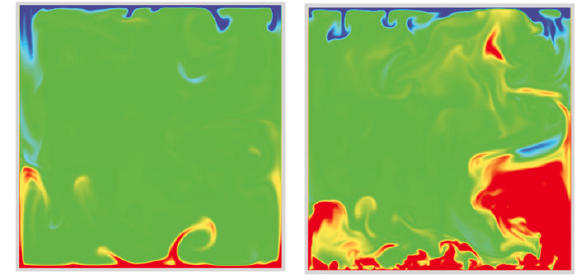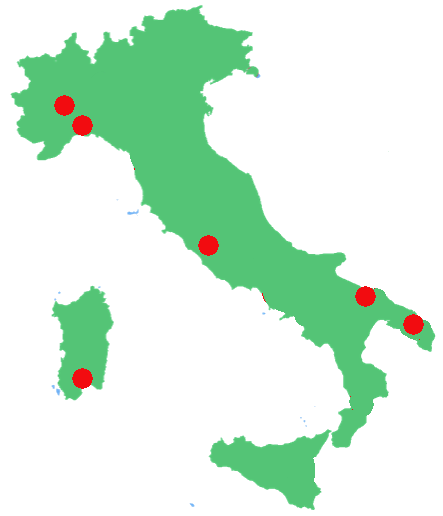Abstract
 Turbulence is the last great problem of classical physics still mainly unsolved.
With turbulence we mean a physical state of a flow with many dynamically active
variables and far from equilibrium. The first difficulty in theoretical approaches
to turbulence consists in the large number of active degrees of freedoms.
The scale where energy is injected ca be strongly separated from the scale where energy
is dissipated. Non-linear interactions lead to a strong coupling between all degrees of freedoms,
transferring energy from the injection scale to the dissipative scale.
The consequent chaotic dynamics requires a statistical description.
One of the most important theoretical problem is related to universality,
i.e. to which extent the statistics of the flow is independent of the
injection mechanism. The problem formulated here has a much wider scope
than its application in fluid mechanics. From the point of view of theoretical physics,
Turbulence is a classical field theory, out of equilibrium and in a strong
coupling regime. In way of example, it is analog to field theories with an infrared
attractive renormalization group fixed point. This is the situation, e.g., for field
theories corresponding to critical lattice spin systems. In this analogy, the role
of space and and wave number are interchanged.
Turbulence is the last great problem of classical physics still mainly unsolved.
With turbulence we mean a physical state of a flow with many dynamically active
variables and far from equilibrium. The first difficulty in theoretical approaches
to turbulence consists in the large number of active degrees of freedoms.
The scale where energy is injected ca be strongly separated from the scale where energy
is dissipated. Non-linear interactions lead to a strong coupling between all degrees of freedoms,
transferring energy from the injection scale to the dissipative scale.
The consequent chaotic dynamics requires a statistical description.
One of the most important theoretical problem is related to universality,
i.e. to which extent the statistics of the flow is independent of the
injection mechanism. The problem formulated here has a much wider scope
than its application in fluid mechanics. From the point of view of theoretical physics,
Turbulence is a classical field theory, out of equilibrium and in a strong
coupling regime. In way of example, it is analog to field theories with an infrared
attractive renormalization group fixed point. This is the situation, e.g., for field
theories corresponding to critical lattice spin systems. In this analogy, the role
of space and and wave number are interchanged.

The second obstacle is that for systems strongly out of equilibrium we do not have any general guiding principle, such as the Gibbs principle of statistical mechanics at equilibrium. Many phenomena common to other fields of theoretical physics of the 20th century have been also observed in turbulent flows. We cite the presence of anomalous scaling laws and of dissipative anomalies as two important examples. Turbulence has always attracted the interests of a vast community of theoretical physicists, using a variety of different methods as conformal field theory for 2d flows, Renormalization Group techniques, Path Integrals and Group Theory. The research proposed in this Iniziativa Specifica is focused on the problem of Particles and Fields transported by --and reacting with-- turbulent and complex flows. We want to understand the behavior of the flow once seeded with polymers, surfactants, bubbles, with reactive quantities, as in combustion, or with active scalars like Rayleigh-Benard convection, to cite just some. We want to understand the behaviour of the flow in micro- and nano-scale with and without movable objects. These are real problems prompting interesting questions for theoretical physics. A number of aspects of the problems of particle dispersion, drag-reduction and passive/reactive/active advection by turbulent flows have been addressed before in the geophysical, astrophysical and engineering communities.
The objective of this research effort is to focus on these problems with the methods developed in the context of fundamental theoretical research


